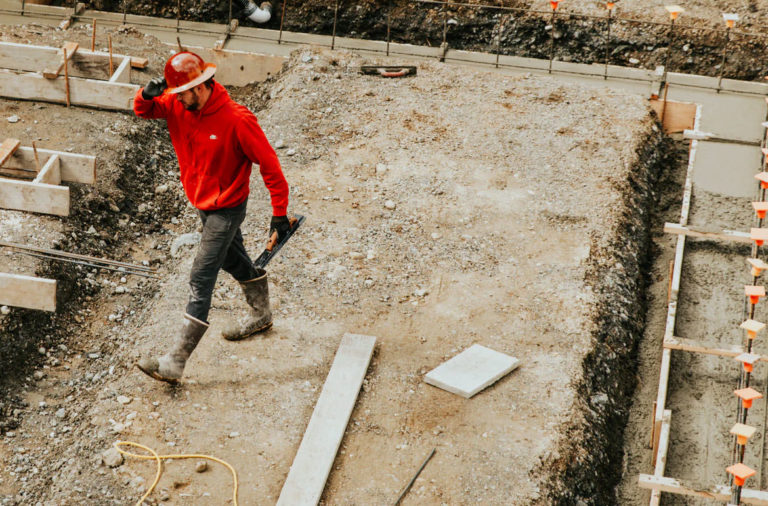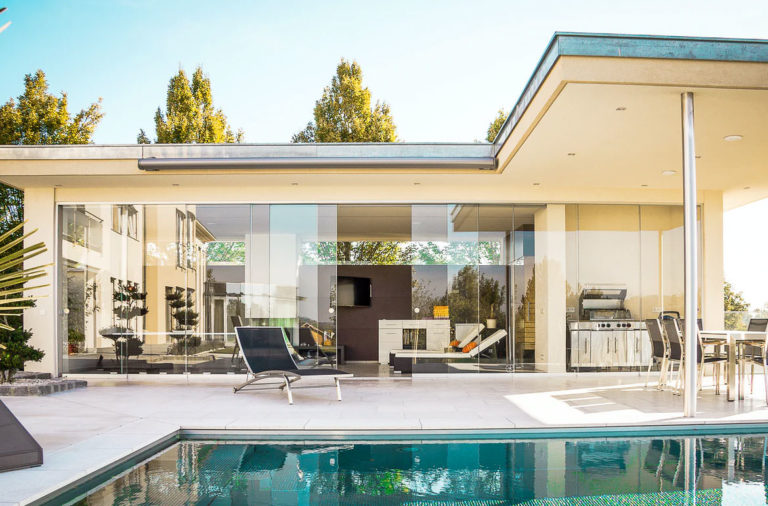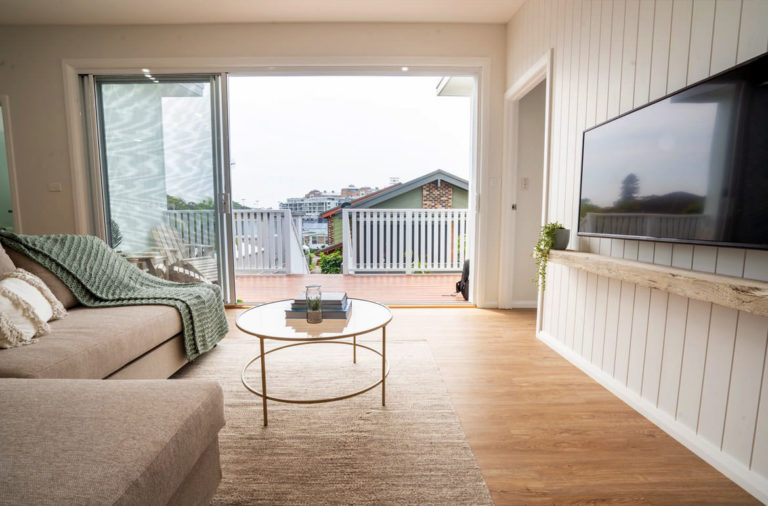
If you are thinking about building a granny flat, you really want to consider every dollar that you might have to spend, including Council fees. So, what are the types of Council fees for granny flats? Some common fees are:
- Long Service Levy
- Council Contribution fees
- Development Lodgement Fees
- Fees for Processing Your Lodgement
- Assessment Fees
- Inspection Fees, including Sewer and Water Inspection
Today we will cover these common types of fees that you might have to pay to get approval for your granny flat.
We will talk about where these fees differ, both from state to state, and from Council to Council. Finally, we will discuss whether there is any way to save yourself money on the granny flat fees.
DON'T PAY A FORTUNE FOR YOUR GRANNY FLAT. Find out how to deal with council and build a granny flat for the lowest cost possible. Learn More.
Let’s get straight into it.
Common Types of Fees for Granny Flat Approvals
A lot of the Council fees may not make sense to you – they really didn’t to me.
But many of these were costs that I had to pay, there was no escaping them, and depending on your Council, so may you.
I’ll discuss some of the common costs that you may have to pay to Council for fees now.
This is a levy that the New South Wales Government puts on all building and construction jobs that need approval under any legislation, if they cost $25,000 or more (including GST).
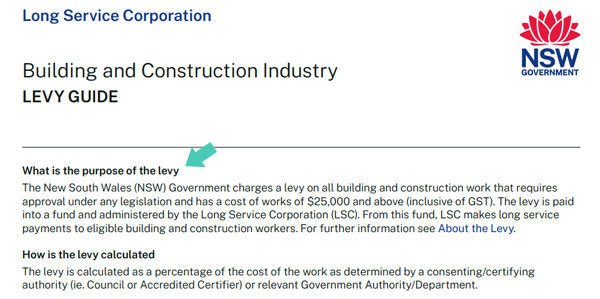
The NSW Levy can’t be avoided. However as an “Owner-Builder” you are able to recoup a 50% discount at the end of your build
The levy goes into a fund managed by the Long Service Corporation (LSC), who use it to make long service payments to any eligible workers in the building or construction industry.
Currently, the levy is 0.35% of the total cost of your granny flat, for, as mentioned, all work that is more than $25,000. But from 1 January 2023, this will change to 0.25% of the total cost of your granny flat, and will only be charged if your work costs more than $250,000 (including GST).
So soon, you may not have to pay this, as long as you keep the total cost of your building under $250,000.
Council Contribution Fees
These fees can vary greatly between Councils, and at times can be eye-wateringly high.
Unfortunately for some, these fees are simply bad luck. If you live in one Council you may not have to pay anything. If you live in the next Council over, you may have to pay over $20,000.
I go into how and why these are charged in great detail under the sub-heading “Why Do Fees Differ From Council to Council?“.
Development Lodgement Fees
To get approval for your granny flat, you will have to submit an application – most of the times this can be done online.
Sometimes, the Council will ask you to pay to submit this, but only in some states of Australia. On a similar note, they may also charge you Fees for Processing Your Lodgement, or Assessment Fees.
To see which states of Australia you have to pay these in, and how much they cost, refer to the sub-heading “Where the Fees May Differ From State to State” below.
Inspection Fees
One common inspection done by Council is for your plumbing and sewerage.
The Council will charge you for this, as they will generally have to come out for 3 inspections:
- Once your trenches have been dug, and your pipes are laid in ground (after connection to Council mains).
- When your rough-in is finished, and the internal pipes are fitted (prior to your walls being plastered).
- Third and last, to make sure everything has been properly completed.
Where the Fees May Differ From State to State
Every state in Australia runs under a different policy for approving their granny flats, which is why the fees differ.
We’ll go into a bit of detail about most states, their policy and regulations, and therefore their fees.
Australian Capital Territory
Called a “secondary residence” in the ACT, a granny flat the regulations for a granny flat are in the Planning and Development Regulation 2008, whilst Planning and Development Act (2007) is what primarily governs Development Approval.
This allows the Councils to charge you a fee when you apply for a DA. This will depend on the total cost of your build, but can vary from $265.80 to $969.65 or more – the exact cost can be seen here.
To get more of an idea on the costs and approval process for a secondary residence in the ACT, view our blog, “Granny Flat ACT Regulations – Get The Facts Here”.
New South Wales
NSW runs under the regulations of SEPP, which can be read about in our article here, or viewed here.
This allows Councils to charge you Council fees for certification and inspection, and also force you to pay Council contributions.
These fees can be quite large and quite variable. One Shire we have known to be $4200, another $10,400. Just how these are calculated and why they vary so much can be seen underneath the sub-heading “Why Do Fees Differ From Council to Council?” below.
To read more about the costs and regulations in NSW, you can view our article “Granny Flat Laws NSW – The Definitive Guide”.
South Australia
South Australia has a streamlined process state-wide, in which their fees are published by the Government Gazette, and can be seen in their fees and charges at a glance.
These are all Council fees for lodging a Development Application to get approval for your granny flat (known as an ancillary dwelling), and we have broken them down below:
- Development Lodgement Fee (Online) – $184
- Additional Processing Fee for Lodgement – $83
- Deemed-to-Satisfy Assessment Fee – $218
- Basic Compliance Fee – $83
- Building Assessment fees – $468 or 0.25% of the total cost of the development (the greater of the two)
- Certificate of Occupancy (payable to Certifier or Council) – $52
- Inspection (payable to Council) – $250
Under the Local Government Act, Councils in South Australia are also allowed to charge separate rates for granny flats. We have known these to be an increase of as much as $840 a year.
You can also ask for another bin for the granny flat, but you may be charged another fee of about $42 per year for this.
For more insight on the charges in South Australia, and lodging an application, you can read our blog, “SA Granny Flat Regulations – The Rules Broken Down”.
Tasmania
There is no state-wide policy in Tasmania that covers what you can and cannot do when building a granny flat, so both regulations and fees vary between Councils’.
So, you will have to contact your local Council to find out what your approval fees are in Tasmania.
However, for some insight into getting approval for a granny flat, and other costs in Tasmania, you can see our article “Granny Flat Tas Regulations – The Definitive Guide”.
Victoria
The guidelines for permits for granny flats are underneath both the Building Act 1993 and the Building Regulations 2018.
This allows the Councils’ to charge you the below fees:
- Planning permit fees – These vary in cost, depending on your local Council. Some Councils do not even require them.
- Lodgement fee – This price will also be determined by your local Council.
- Government levy charges – Your building surveyor can let you know what this will be.
To get more of an idea of these fees, and any other costs you will have to pay for a granny flat in Victoria, you can read our blog, “Victoria Granny Flat Rules – The Complete Summary Here”.
Western Australia
WA’s granny flats regulations run under the Planning and Development Act 2005.
This allows the Councils to charge you:
- Fees – The fees are for the permits required for building.
- Increased Rates – Building a granny flat could potentially increase your rates, as your rates are calculated on the rental value of your property.
In WA. you have two major fees, once the plans are completed they are passed on for assessment (in most cases) for certification. There is a cost involved with this, starting at around $500. After this ‘pre-assessment’ by a certifier, you may be charged again by your local council.
These fees will vary from Council to Council, as a cost to approved the final plans issues by the certifier.
To find out more about what building a granny flat (called an ancillary dwelling) in WA costs, you can read our article, “Granny Flat WA Regulations – Guidelines Revealed.”
Why Do Fees Differ From Council to Council?
As you may have seen, the Contribution fee that you must pay can be quite high, and also vary drastically.
This is because of both how and why they are calculated.
In NSW, for example, the Contribution fee you must pay to your Council is determined by:
- The expected growth of the population in the area in the years ahead.
- The costs of the necessary works and services that is identified for this population.
- A per person cost for the required facilities for those who are already residing in the area is then determined.
- This cost is then associated with a cost for each dwelling already in the area.
- This is used as the principal to then charge your contribution fee as a cost per dwelling.
- As a result, how big your granny flat is – how many rooms it has, so how many people can live in it – is also taken into calculation.
We have known some Councils to charge rather low fees, some nil, some only $500, for a 2-bedroom granny flat.
We have known other Councils, for the same size granny flat, to charge rather high prices – as much as $16,000 or an incredible $20,000+.
For example, the Councils below have charged these fees in the past:
- The City of Willoughby – Nil (at the time of this post)
- Blacktown Council – $4,200.
- The Hills Shire Council – $10,400.
Now, going in to why they are calculated the way they are. Well, when your granny flat is built, the Council have grounds for belief that more people are going to be living in the area, thus the Councils population will increase. Meaning, your granny flat has increased the need for more public facilities and services in the area for these people to use.
So, the fees that you pay are used so the Council can supply more public amenities, such as:
- Libraries, and the resources in them.
- Open Space, Sports and Recreational facilities or upgrades to existing facilities.
- Plan Authority and Admin.
- Infrastructure for the District.
- Transport such as Trains and Buses, Roads, Bicycle Pathways, Car Parks, and Traffic Management.
- Protection from Bushfires.
- ‘Welcome’ Kits for New Residents.
- Rural or Urban Upgrades.
As these prices can be so high and variable, I recommend you contact your local Council to get a quote before you begin your project.
Are There Ways to Save on Granny Flat Fees?
As you may have noticed, the prices for some fees can be rather high. This may potentially have an impact on whether your project is viable, as they are unavoidable.
But are there ways to reduce them? Well, many of the fees are calculated on the value of your property, or how much it costs to build your granny flat.
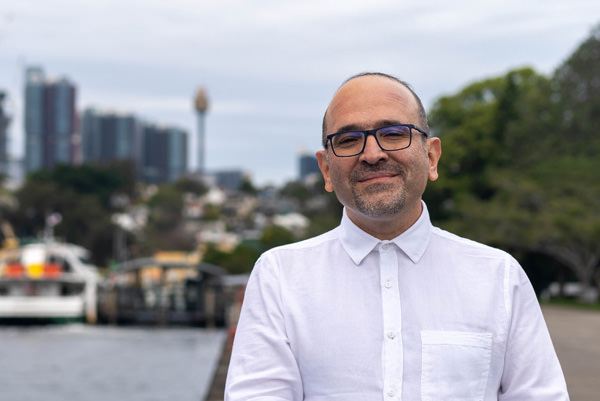
Oz, our in-house architect can work with you to reduce the size of your granny flat, without losing out on functionality
So you can simply build your granny flat for the lowest price possible, which is where we come in. DIY Granny Flat will help you build this – see our video here.
Just some things you can think about doing are consider the amount of rooms in your granny flat, as Council contributions are based on how many people will be living in your granny flat, and less rooms also equals less cost to build.
So you could remove amenities such as the bathroom and kitchen, and have a living area and sleep-out only granny flat. Or not include the kitchen in the initial design, and then change it after, so it’s self- contained.
Conclusion
I hope this article has given you some idea of what Council fees you have to pay, and why. You may not have to pay as much as what is stated – as the fees vary between both states and Councils, I do suggest that you contact your local Council to get your exact fees.
Unfortunately, you will not get any personal benefit from paying these fees either – they are simply costs that you will be instructed to pay by your Council to gain approval.
It is important to note these Council costs are often not included if you hire a building company to build your granny flat, as they are all costs that the property’s owner is responsible for paying.
If ready to start building, at the lowest cost, and want someone to help you navigate Council to get approval, you can see our designs and prices here.



